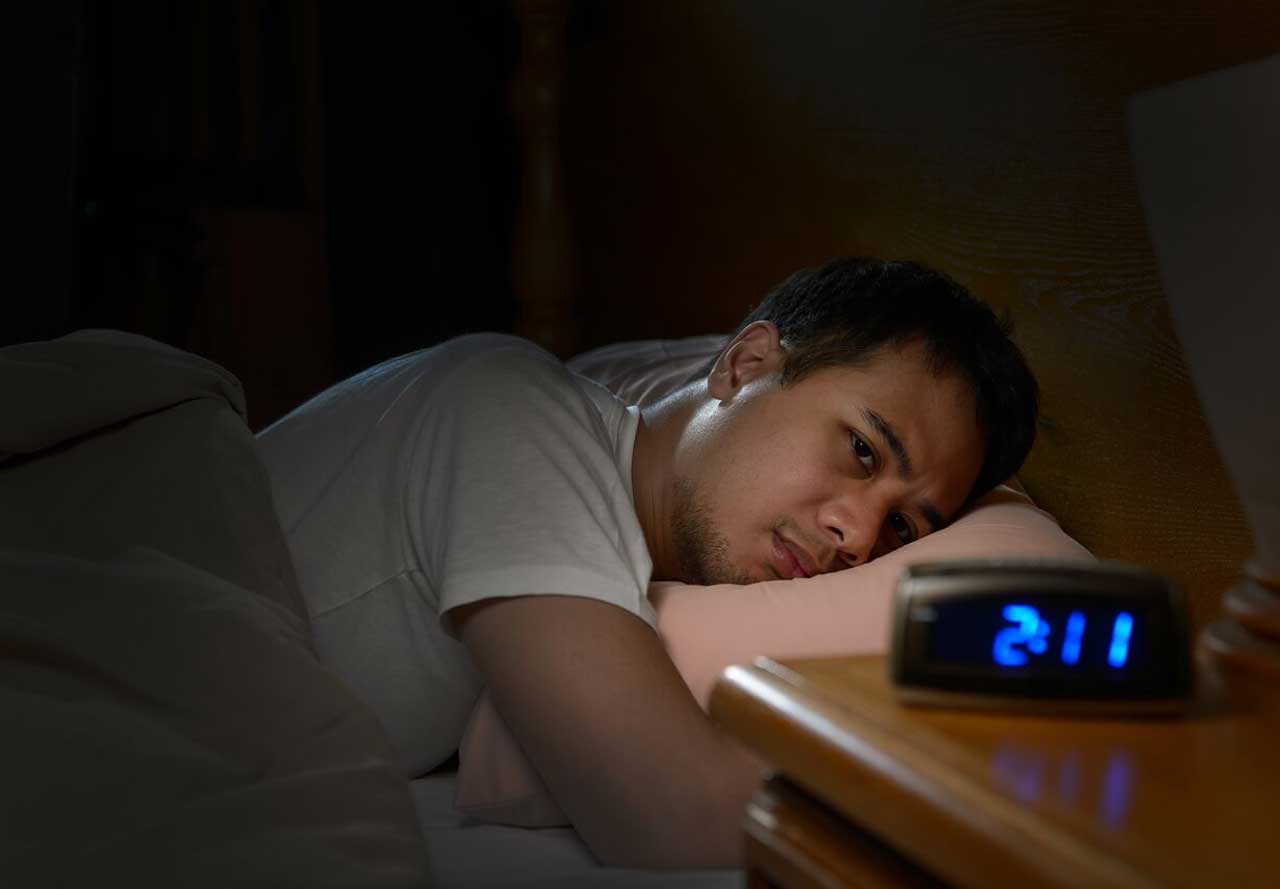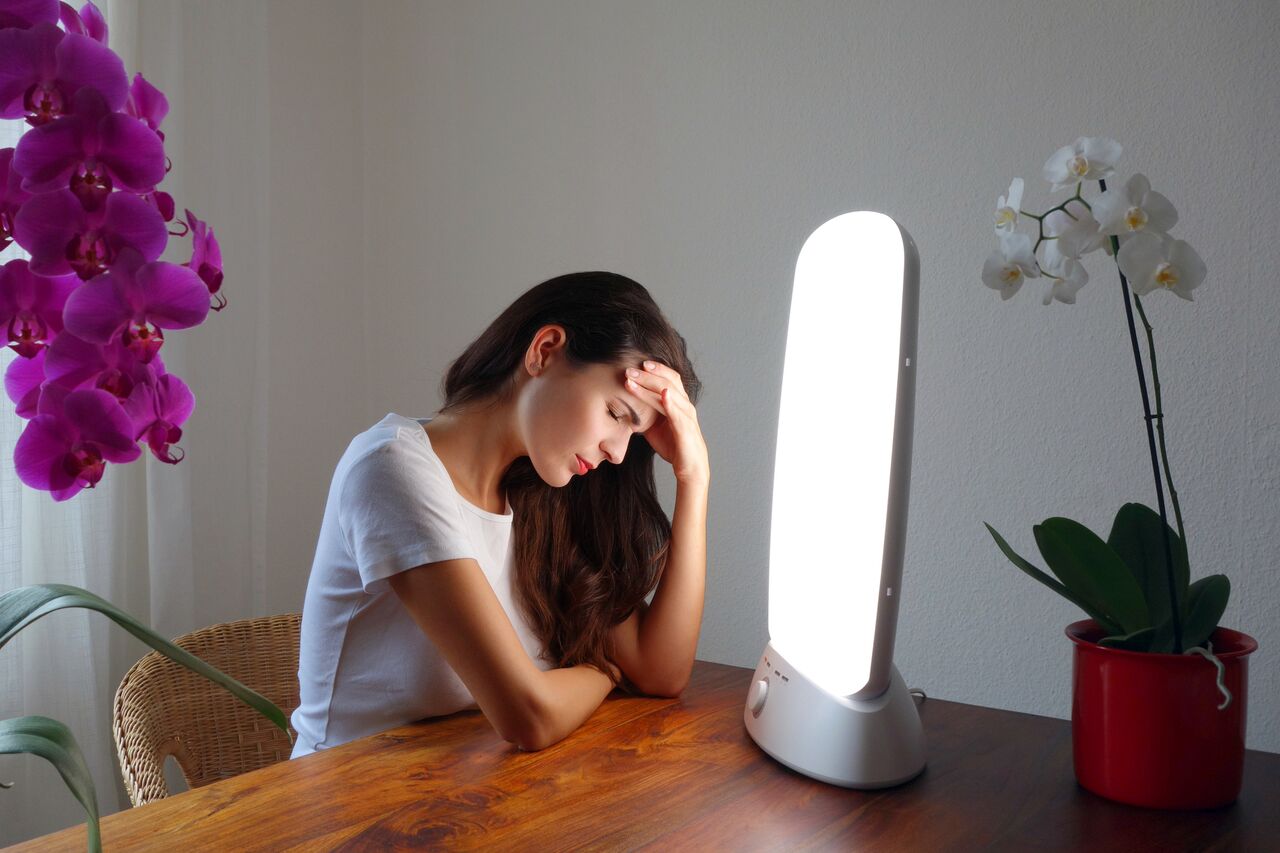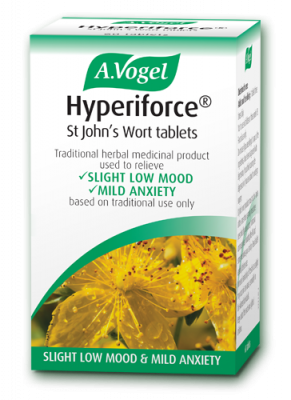What is SAD?
Seasonal Affective Disorder, also known as SAD, is a type of depression that correlates with the seasons. Usually it starts in autumn and continues right through winter, being most severe in December, January and February. Often it disappears during spring and summer and returns again the following autumn.
Symptoms of SAD include; fatigue, persistent low mood, lack of motivation, sleeping more than usual, and feelings of despair and sadness.
Historically we only ever worked outside; 200 years ago 75% of the population worked outdoors now less than 10% work outside.1 Gradually we are becoming less and less exposed to natural light; our modern lifestyles prevent us from living in sync with nature, the rise of night shifts and back shifts has weakened our body’s natural ability to regulate our body clock. These lifestyle shifts can lead to light deficiency problems such as SAD.

What causes SAD?
The exact cause of SAD isn’t known, however there are a number of theories;
• SAD is solar powered
The most popular theory suggests that Seasonal Affective Disorder occurs due to the seasonal changes of light. When light hits the receptors in the back of the eye messages are sent to the areas of the brain that control sleep, sex drive, mood, energy and appetite. If we don’t receive enough light, as is common during winter, these functions can become impaired.
• Disruptions to our body clock (circadian rhythms)
The lack of light during winter can disrupt our body clock. The reduced hours of daylight can trick our brain into thinking that it is night time during the day; this can then cause us to feel more tired and low in mood.
This lack of sunlight can also cause vitamin D deficiency. It is thought that lack of sunlight keeps the hypothalamus from working properly which then leads to a disruption in circadian rhythms, which in turn can negatively impact our melatonin and serotonin levels.
• High melatonin levels
When it is dark our brain produces a hormone called melatonin which makes us sleep and when daylight comes around again we stop producing melatonin and wake up. People with SAD tend to produce higher levels of melatonin in winter than people without SAD.
When someone with high melatonin levels is exposed to bright light melatonin levels drop back down to normal. Despite this those who suffer from SAD still experience the depressive symptoms associated with the condition, suggesting that this is not the only cause of SAD.2
• Lower serotonin levels
Serotonin is a hormone that regulates our mood, people experiencing depression have lower levels of serotonin. Lack of sunlight is thought to be linked to lower levels of serotonin which can cause SAD.
5 natural ways to prevent SAD
1) Let there be light – therapy
Light therapy is the most common method of preventing and treating SAD. SAD lamps attempt to mimic natural daylight by stimulating receptors in the eyes to trigger a release of serotonin. This boost of serotonin is thought to help promote natural sleep cycles and a general feeling of wellbeing.
SAD lamps need to emit an intensity of light that is at least 2,500 lux in order to release this boost of serotonin.3 SAD lamps should be placed in your peripheral vision rather than directly in front of you, your distance from the SAD lamp will depend on the intensity of the light. It is recommended that SAD lamps be used in the morning as this will give you a boost throughout the day and not interfere with your sleeping patterns.

Research has found that lights of different colours can affect your mood. Blue light has been found to be more beneficial for boosting your mood than green or red light. It is thought that blue light to plays an important role in your brain’s ability to process emotions. The research suggests that spending more time in blue-lighted environments could, potentially, help to prevent SAD.4
In addition to SAD lamps, sunrise alarm clocks are another way of nurturing your circadian rhythms. Similar to SAD lamps, sunrise clocks imitate natural lighting. So instead of being woken up by a shrill horn or beeping noise from a regular alarm clock, you will be woken up gradually by an increasing light. They take around half an hour to reach their full brightness and often have a gentle nature sound if you need a little encouragement to wake up.
2) Exercise
Regular exercise is one of the best ways to combat depression and is now backed by science. Exercising for 1 hour a week has been shown to provide the same results as 2.5 hours of light therapy.5 This doesn’t mean you have to go full out at the gym if you don’t want to; anything that gets your heart pumping faster is enough to provide the benefits. Try brisk walking or gentle, low impact sports such as yoga.
3) Vitamin D supplement
Vitamin D has long been used to help prevent SAD because of its association with light. We get most of our vitamin D from sunlight and it is tricky to get it in our diet without the aid of supplements. One study found that taking a vitamin D supplement helped improve depression in people suffering from SAD.6
This is no coincidence either, as vitamin D is mostly available to us from April to August through the sun. During the winter months vitamin D is less available to us and this is the time that SAD is most likely to rear its head. Vitamin D appears in a wide variety of brain tissue and increases nerve growth.7
4) Herbal remedies
Herbal remedies, such as Valerian and St John’s Wort, are being used more commonly to help combat symptoms of SAD. Research has found that hypericin, found in St John’s Wort, interferes with the functional changes in the brain that are caused by depression.8
St John’s Wort can also help your body to absorb nutrients and restore a general sense of wellbeing. Although it doesn’t have the same side effects found in drugs such as Prozac, it speeds up your liver function which means it is not recommended alongside any other medication (including contraceptives). It can also increase your sensitivity to the sun and can therefore not be used alongside light therapy. Always check with your doctor or nutritionist if you are unsure about taking this herbal remedy.
5) Get outside
If you can, try to increase the amount of natural light you are exposed to. Open your curtains and blinds in your home and workplace during the day and take short walks outside during your lunch break to try to get as much light as possible.
Studies have found that being in nature can help to reduce heart rate and levels of depression, fatigue and anxiety. Try taking a walk in your local park and detaching yourself from electronic devices. For more ideas check out our blog on forest bathing and the ways in which nature can make us happier.
When to seek help
Natural remedies can really help if you suffer from SAD, depression, low mood, anxiety, or stress. However, if you feel as though your symptoms are becoming unmanageable always put an appointment on with your doctor.
1 http://www.sad.org.uk/
2 https://www.mind.org.uk/information-support/types-of-mental-health-problems/seasonal-affective-disorder-sad/causes-of-sad/#.WaU0bciGPIU
3 http://www.sad.org.uk/sad-light-work/
4 http://articles.mercola.com/sites/articles/archive/2015/02/14/seasonal-affective-disorder-vitamin-d.aspx
5 https://psychcentral.com/lib/treatment-for-seasonal-affective-disorder/
6 https://www.ncbi.nlm.nih.gov/pubmed/10888476
7 http://articles.mercola.com/sites/articles/archive/2015/02/14/seasonal-affective-disorder-vitamin-d.aspx
8 https://www.ncbi.nlm.nih.gov/pubmed/11879791
Originally written on 04/09/2017, updated on 26/09/2018.








